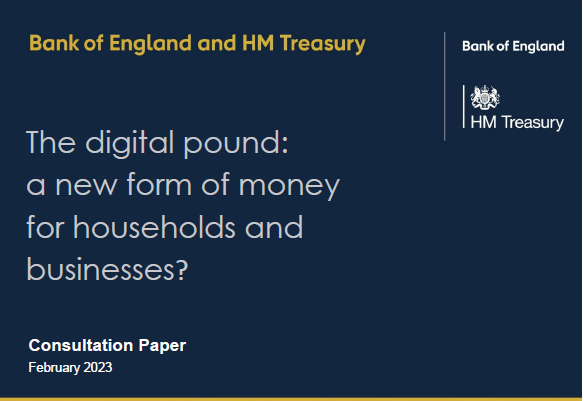Published on 28th June 2023
We have sent an addendum to our previous response to this consultation on the ‘digital pound’.
Its message is that the ‘digital pound’ will not be a form of ‘central bank money’ if its so-called Distribution Model replicates what happens in the Visa and Mastercard ecosystems on three points.
The consultation papers were vague on the related points and there were no questions in the consultation specifically about them, so I felt it was important to record them.
You can download the full addendum here.
My concern surfaced when reading the publication by the Bank for International Settlements entitled ‘Central bank digital currencies: ongoing policy perspectives – May 2023’ and noting that the Bank of England provided the secretariat for this publication.
The publication identified ensuring ‘ongoing retail access to central bank money’ as a main purpose and value of CBDC. It occurred to me that there was a high likelihood that the Bank of England’s proposed model for the UK’s CBDC – the ‘digital pound’ – could infringe key parameters for its being ‘central bank money’.
The problem lies in the role of intermediaries between the issuer of the ‘digital pound’ (the Bank of England) and its users (citizens and businesses), if the role went further than that of intermediaries in supporting the circulation of physical cash – essentially a ‘fetching and carrying’ role – and extended to the relaying of electronic messaging.
Firstly, there cannot be any deductions-from-face-value between the payer and payee: the full value of the sale of goods or services must pass.
Secondly, the value must be transmitted instantly. Within the Visa and Mastercard ecosystems the payee receives a guarantee of future payment at the point at which a sale is made, with the settlement following 2-3 business days later. The ‘digital pound’ must settle instantly and with finality.
Thirdly, and more subtly, the ‘digital pound’ must never become subject to the interventions of intermediaries whose currency is ‘commercial bank money’, such as:
- by intermediaries identifying flows amongst their clientele that could be netted: every order to pay the ‘digital pound’ must create accounting entries for the full amount at the Bank of England, in the same way that a client’s order for an exchange-traded financial instrument must be passed across the floor of the exchange and not offset at the level of the client’s broker against equal-and-opposite orders the broker has received from other clients;
- by intermediaries becoming a legal party to any payments using the ‘digital pound’. The contractual situation for physical cash must be preserved: banks, ATM operators, security carriers and so on are involved in its distribution, but they are not parties to its usage between a payer and a payee.
The presence of any of deductions-from-face-value, a settlement delay or a role for intermediaries in the usage of the ‘digital pound’ will cause it to fail the qualfication of being ‘central bank money’. Consequentially it will not meet the objective of ensuring ‘ongoing retail access to central bank money’.

